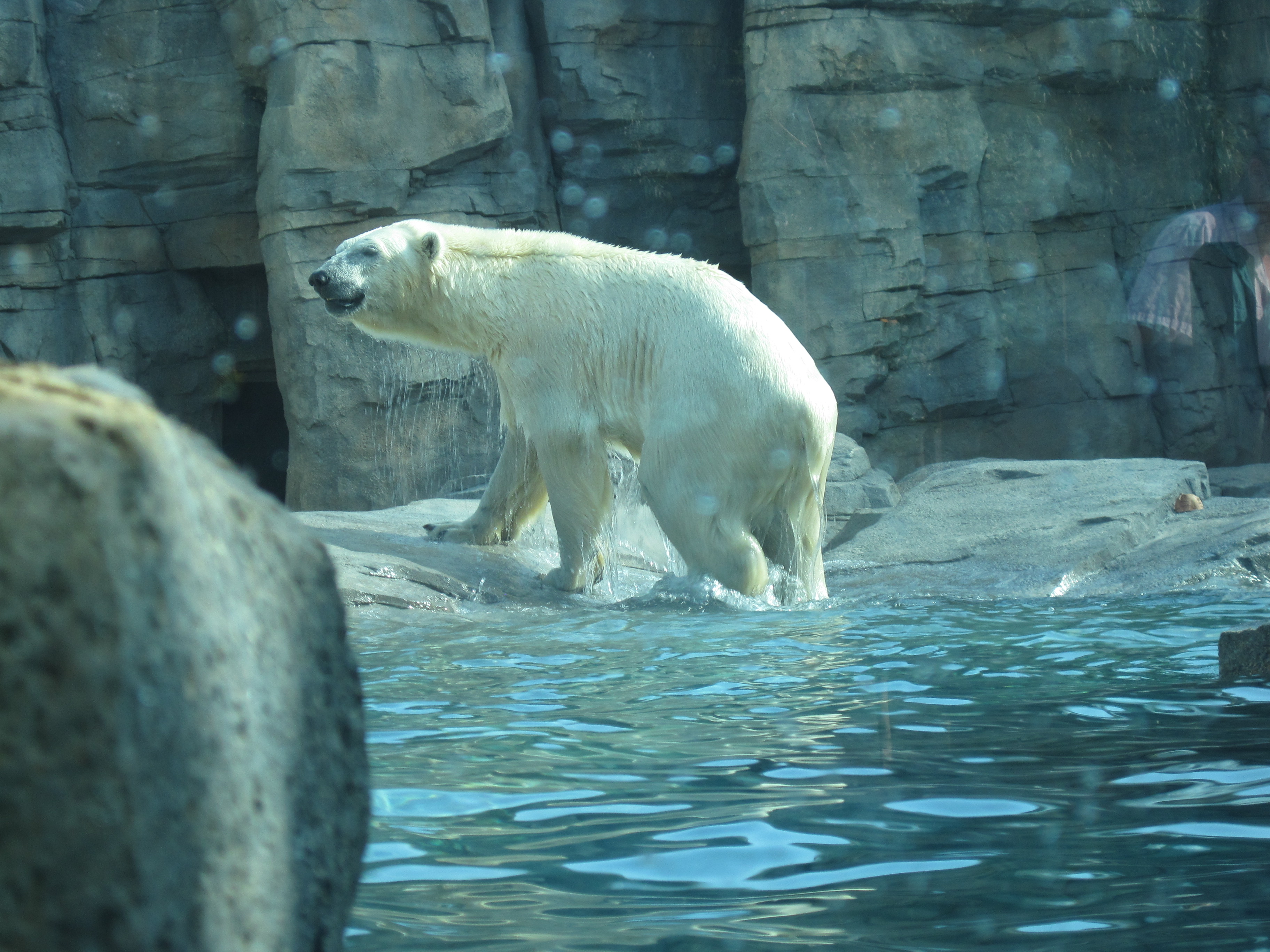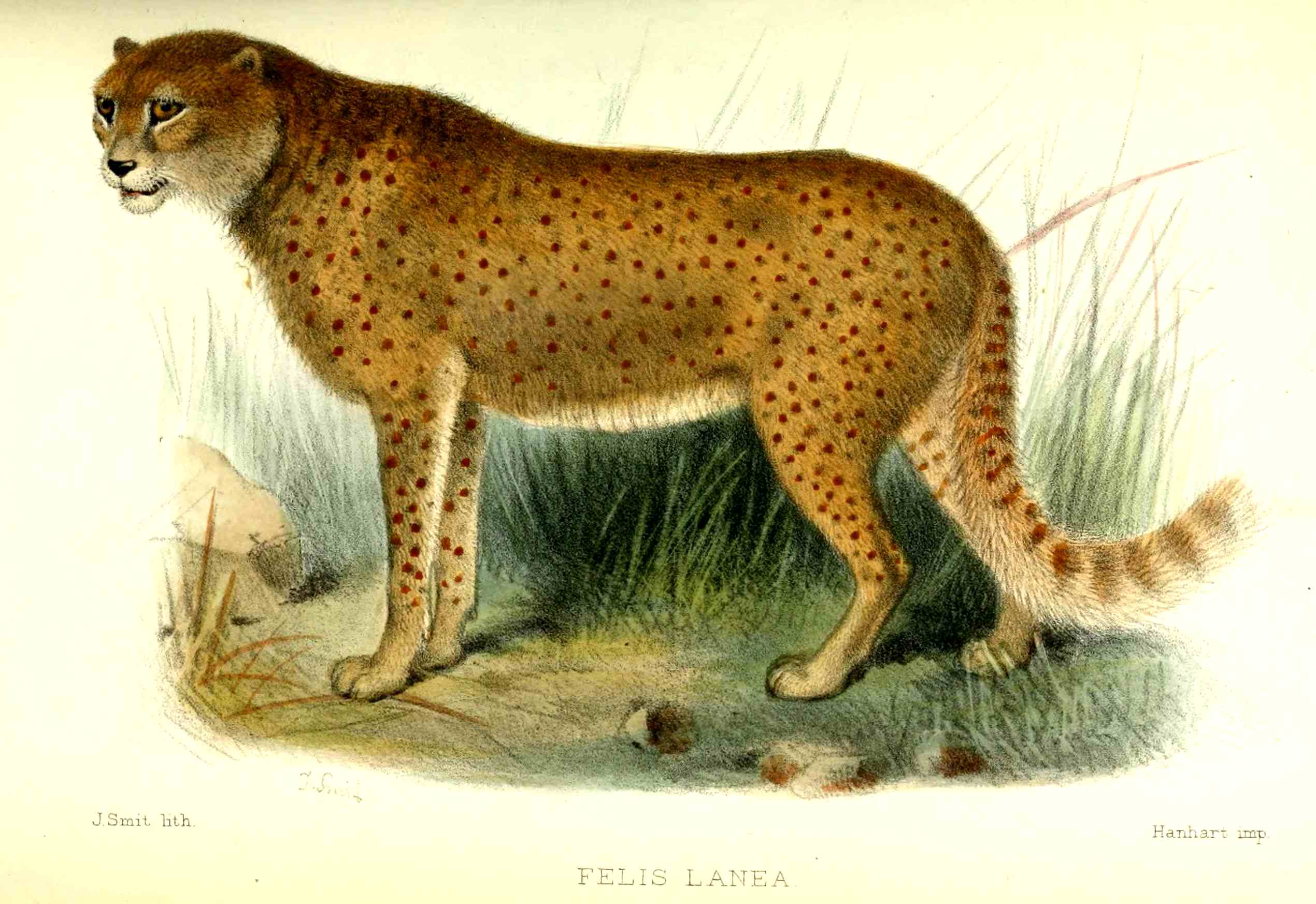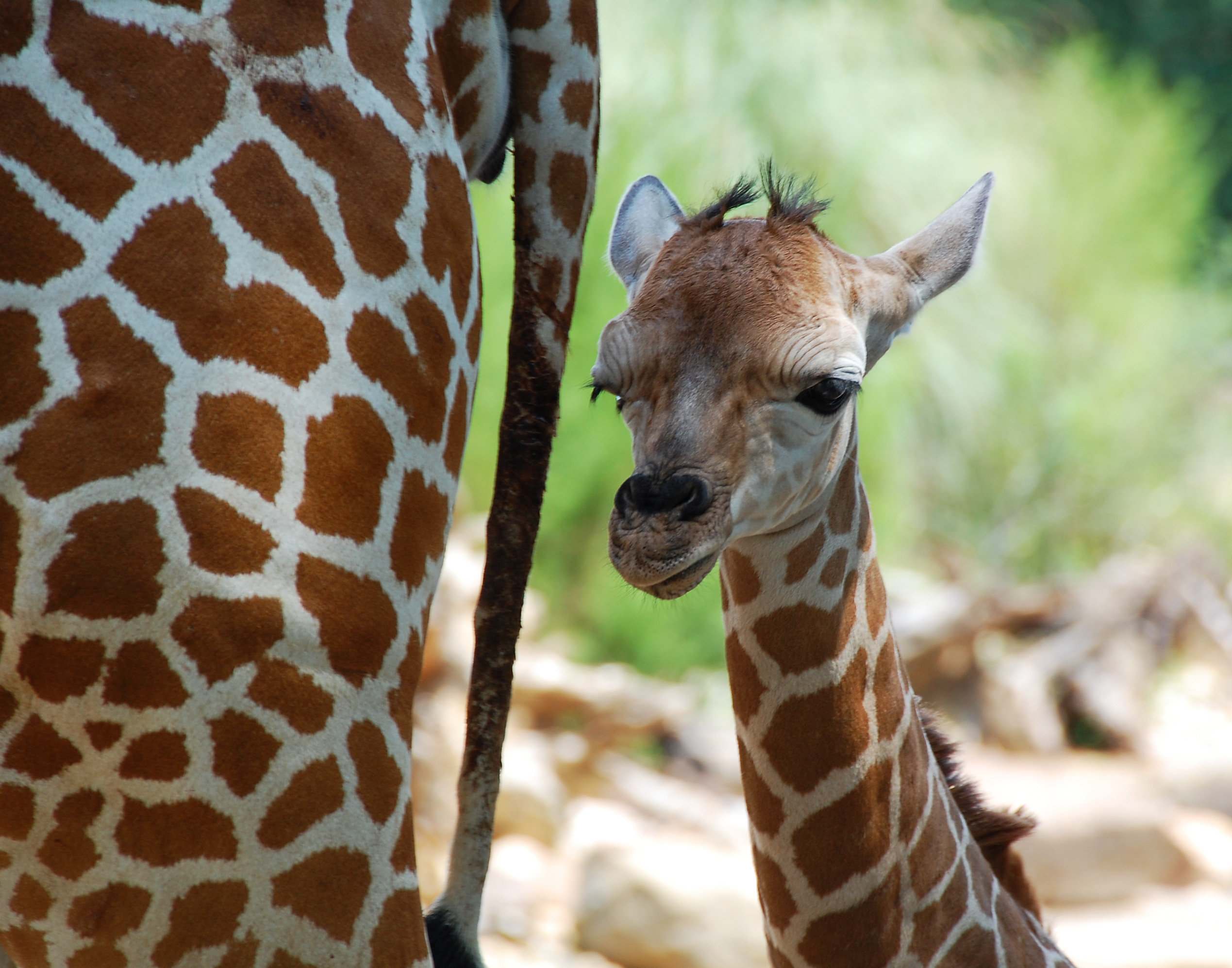|
Kansas City Zoo
The Kansas City Zoo is a zoo founded in 1909. It is located in Swope Park at 6800 Zoo Drive Kansas City, Missouri, in the United States. The zoo has a Friends of the Zoo program. It is home to more than 1,300 animals and is an accredited member of the Association of Zoos and Aquariums (AZA). History Planning for the zoo started in 1907, and its gates opened on December 13, 1909. The zoo evolved slowly during its first 40 years, while it added exhibits such as the Bear Grotto in 1912. It gained more momentum when it added a monkey island and a children's zoo in the 1940s. In the 1950s, the sea lion pool, African Veldt, giraffe house and flamingoes were all added; and the zoo added an otter pool, elephant house, and the Great Ape House in the 1960s. The early 1970s brought a dairy barn, the Great Catwalk and gibbon islands. Approximately twenty years later (in 1991), after voting and finances from a grant, the zoo expanded to the current size of , adding Australia in 1993, Inter ... [...More Info...] [...Related Items...] OR: [Wikipedia] [Google] [Baidu] |
Swope Park
Swope Park is a city park in Kansas City, Missouri. At , it is the 51st-largest municipal park in the United States, and the largest park in Kansas City. It is named in honor of Colonel Thomas H. Swope, a philanthropist who donated the land to the city in 1896. Most of the park is heavily wooded, and the developed area includes these major destinations: Starlight Theatre, an 8,000+ seat outdoor theater; the Swope Soccer Village sports complex; the Kansas City Zoo; the Lakeside Nature Center, one of Missouri's largest native species rehabilitation facilities; and Swope Memorial Golf Course. In 1949 the course hosted the Kansas City Open Invitational of the PGA Tour, and in 1953 it hosted the United Golf Association (UGA) National Championship, in which Ann Gregory and Charlie Sifford won the women's and men's divisions, respectively. Open seasonally, the Battle of Westport Museum & Visitor Center details the Battle of Westport in 1864, the largest American Civil War battle fo ... [...More Info...] [...Related Items...] OR: [Wikipedia] [Google] [Baidu] |
Masked Lovebird
The yellow-collared lovebird (''Agapornis personatus''), also called masked lovebird, black-masked lovebird or eye ring lovebird, is a monotypic species of bird of the lovebird genus in the parrot family Psittaculidae. They are native to Arusha Region of Tanzania and have been introduced to Burundi and Kenya. Although they have been observed in the wild in Puerto Rico, they are probably the result of escaped pets, and no reproduction has been recorded. They have also been observed in Arizona. Description The yellow-collared lovebird is a mainly green small parrot about 14.5 cm (5.5 in) long. Its upperparts are a darker green than its lower surfaces. Its head is black, and it has a bright red beak with white above it and white eyerings. Yellow on the breast is continuous with a yellow collar and an expansion of yellow over the nape of the neck. Male and female have an identical external appearance. Breeding The yellow-collared lovebird brings nesting material in its bea ... [...More Info...] [...Related Items...] OR: [Wikipedia] [Google] [Baidu] |
Grey Crowned Crane
The grey crowned crane (''Balearica regulorum''), also known as the African crowned crane, golden crested crane, golden crowned crane, East African crane, East African crowned crane, African crane, Eastern crowned crane, Kavirondo crane, South African crane and crested crane, is a bird in the crane family, Gruidae. It is found in eastern and southern Africa, and is the national bird of Uganda. Taxonomy The grey crowned crane is closely related to the black crowned crane, and the two species have sometimes been treated as the same species. The two are separable on the basis of genetic evidence, calls, plumage and bare parts, and all authorities treat them as different species today. There are two subspecies. The East African ''B. r. gibbericeps'' (crested crane) occurs in the east of the Democratic Republic of the Congo and in Uganda, of which it is the national bird represented in its national flag, and Kenya to eastern South Africa. It has a larger area of bare red facial s ... [...More Info...] [...Related Items...] OR: [Wikipedia] [Google] [Baidu] |
Scimitar Oryx
The scimitar oryx (''Oryx dammah''), also known as the scimitar-horned oryx and the Sahara oryx, is a ''Oryx'' species that was once widespread across North Africa. In 2000, it was declared extinct in the wild on the IUCN Red List. A captive bred group was released into an acclimation enclosure within the Ouadi Rimé-Ouadi Achim Faunal Reserve in 2016, then reintroduced into the wild. An additional 21 individuals were released into the acclimation enclosure in 2017. The first ones to be relocated were released into the wild in 2016 and have adapted well to their surroundings. In 2017, another herd of 75 scimitar-horned oryxes arrived in an operation led by Chad's Ministry of Environment and Fisheries and the Sahara Conservation Fund. In 2021, 60 new calves were born, bringing the number in the wild to about 400. This particular oryx can survive for months or even years without drinking water. A grazing animal, it derives most of its daily moisture intake from plants. The scimit ... [...More Info...] [...Related Items...] OR: [Wikipedia] [Google] [Baidu] |
Common Eland
The common eland (''Taurotragus oryx''), also known as the southern eland or eland antelope, is a savannah and plains antelope found in East and Southern Africa. It is a species of the family Bovidae and genus ''Taurotragus''. An adult male is around tall at the shoulder (females are shorter) and can weigh up to with a typical range of , for females). It is the second-largest antelope in the world, being slightly smaller on average than the giant eland. It was scientifically described by Peter Simon Pallas in 1766. Mainly a herbivore, its diet is primarily grasses and leaves. Common elands form herds of up to 500 animals, but are not territorial. The common eland prefers habitats with a wide variety of flowering plants such as savannah, woodlands, and open and montane grasslands; it avoids dense forests. It uses loud barks, visual and postural movements, and the flehmen response to communicate and warn others of danger. The common eland is used by humans for leather, meat, ... [...More Info...] [...Related Items...] OR: [Wikipedia] [Google] [Baidu] |
Lesser Kudu
The lesser kudu (''Tragelaphus imberbis'') is a bushland antelope found in East Africa. It is placed in the genus ''Tragelaphus'' and family Bovidae. It was first scientifically described by the English zoologist Edward Blyth in 1869. The head-and-body length is typically . Males reach about at the shoulder, while females reach . Males typically weigh and females . The females and juveniles have a reddish-brown coat, while the males become yellowish grey or darker after the age of 2 years. Horns are present only on males. The spiral horns are long, and have two to two-and-a-half twists. A pure browser, the lesser kudu feeds on foliage from bushes and trees (shoots, twigs) and herbs. Despite seasonal and local variations, foliage from trees and shrubs constitute 60–80% of the diet throughout the year. The lesser kudu is mainly active at night and during the dawn, and seeks shelter in dense thickets just after the sunrise. The lesser kudu exhibits no territorial behaviour, an ... [...More Info...] [...Related Items...] OR: [Wikipedia] [Google] [Baidu] |
Springbok
The springbok (''Antidorcas marsupialis'') is a medium-sized antelope found mainly in south and southwest Africa. The sole member of the genus ''Antidorcas'', this bovid was first described by the German zoologist Eberhard August Wilhelm von Zimmermann in 1780. Three subspecies are identified. A slender, long-legged antelope, the springbok reaches at the shoulder and weighs between . Both sexes have a pair of black, long horns that curve backwards. The springbok is characterised by a white face, a dark stripe running from the eyes to the mouth, a light-brown coat marked by a reddish-brown stripe that runs from the upper fore leg to the buttocks across the flanks like the Thomson's gazelle, and a white rump flap. Active mainly at dawn and dusk, springbok form harems (mixed-sex herds). In earlier times, springbok of the Kalahari desert and Karoo migrated in large numbers across the countryside, a practice known as ''trekbokking''. A feature, peculiar but not unique, to t ... [...More Info...] [...Related Items...] OR: [Wikipedia] [Google] [Baidu] |
Warthog
''Phacochoerus'' is a genus in the family Suidae, commonly known as warthogs (pronounced ''wart-hog''). They are pigs who live in open and semi-open habitats, even in quite arid regions, in sub-Saharan Africa. The two species were formerly considered conspecific under the scientific name ''Phacochoerus aethiopicus'', but today this is limited to the desert warthog, while the best-known and most widespread species, the common warthog (or simply warthog), is ''Phacochoerus africanus''. Skull Although covered in bristly hairs, their bodies and heads appear largely naked from a distance, with only the crest along the back, and the tufts on their cheeks and tails being obviously haired. The English name refers to their facial wattles, which are particularly distinct in males. They also have very distinct tusks, which reach a length of in the males, but are always smaller in the females.Novak, R. M. (editor) (1999). ''Walker's Mammals of the World.'' Vol. 2. 6th edition. Johns Hopk ... [...More Info...] [...Related Items...] OR: [Wikipedia] [Google] [Baidu] |
Cheetah
The cheetah (''Acinonyx jubatus'') is a large cat native to Africa and central Iran. It is the fastest land animal, estimated to be capable of running at with the fastest reliably recorded speeds being , and as such has evolved specialized adaptations for speed, including a light build, long thin legs and a long tail. It typically reaches at the shoulder, and the head-and-body length is between . Adults weigh between . Its head is small and rounded, with a short snout and black tear-like facial streaks. The coat is typically tawny to creamy white or pale buff and is mostly covered with evenly spaced, solid black spots. Four subspecies are recognised. The cheetah lives in three main social groups: females and their cubs, male "coalitions", and solitary males. While females lead a nomadic life searching for prey in large home ranges, males are more sedentary and instead establish much smaller territories in areas with plentiful prey and access to females. The cheetah is act ... [...More Info...] [...Related Items...] OR: [Wikipedia] [Google] [Baidu] |
Birmingham Zoo
The Birmingham Zoo is a zoological park that opened in 1955 in Birmingham, Alabama, United States. The Birmingham Zoo is an independent, not for profit, 501(c)(3) organization, and is accredited by the Association of Zoos and Aquariums (AZA), participating in AZA Species Survival Plans (SSP). It is the only AZA accredited zoo in the state of Alabama. Approximately 550 animals of 195 species call the Birmingham Zoo home, including sea lions, zebras, rhinos, elephants, and other endangered species from six continents. History ;Early history The Birmingham Zoo originated with a small menagerie of exotic animals kept in a Southside firehouse. As the collection grew, it was moved first to Magnolia Park (now Brother Bryan Park) and then to Avondale Park. At the time, the collection consisted mainly of non-exotic animals, except for "Miss Fancy," a lone elephant donated by the Birmingham Advertising Club which had purchased it as a promotional novelty from a struggling circus stran ... [...More Info...] [...Related Items...] OR: [Wikipedia] [Google] [Baidu] |
Pink-backed Pelican
The pink-backed pelican (''Pelecanus rufescens'') is a bird of the pelican family. It is a resident breeder in the swamps and shallow lakes of Africa and southern Arabia; it has also apparently extirpated in Madagascar. Taxonomy The pink-backed pelican was formally described in 1789 by the German naturalist Johann Friedrich Gmelin in his revised and expanded edition of Carl Linnaeus's ''Systema Naturae''. He placed it with the other pelicans in the genus '' Pelecanus'' and coined the binomial name ''Pelecanus rufescens''. Gmelin based his description on the "red-backed pelican" that had been described in 1785 by the English ornithologist John Latham in his multi-volume work ''A General Synopsis of Birds ''. Latham had been sent a specimen from West Africa. The specific epithet ''rufescens'' is Latin for "reddish". The species is monotypic: no subspecies are recognised. Description It is a relatively small pelican, although by no means is it a small bird. Its length is fro ... [...More Info...] [...Related Items...] OR: [Wikipedia] [Google] [Baidu] |
Black-necked Swan
The black-necked swan (''Cygnus melancoryphus'') is a species of waterfowl in tribe Cygnini of subfamily Anserinae.HBW and BirdLife International (2021) Handbook of the Birds of the World and BirdLife International digital checklist of the birds of the world. Version 6. Available at: http://datazone.birdlife.org/userfiles/file/Species/Taxonomy/HBW-BirdLife_Checklist_v6_Dec21.zip retrieved August 7, 2022 It is found in Argentina, Brazil, Chile, Uruguay, and the Falkland Islands.Remsen, J. V., Jr., J. I. Areta, E. Bonaccorso, S. Claramunt, A. Jaramillo, D. F. Lane, J. F. Pacheco, M. B. Robbins, F. G. Stiles, and K. J. Zimmer. Version 24 July 2022. Species Lists of Birds for South American Countries and Territories. https://www.museum.lsu.edu/~Remsen/SACCCountryLists.htm retrieved July 24, 2022 Taxonomy and systematics The black-necked swan has occasionally been placed by itself in genus ''Sthenelides''. Its closest relatives are the black swan (''C. atratus'') and mute swan (''C. ... [...More Info...] [...Related Items...] OR: [Wikipedia] [Google] [Baidu] |

_head_2.jpg)



_in_the_road.jpg)
.jpg)


